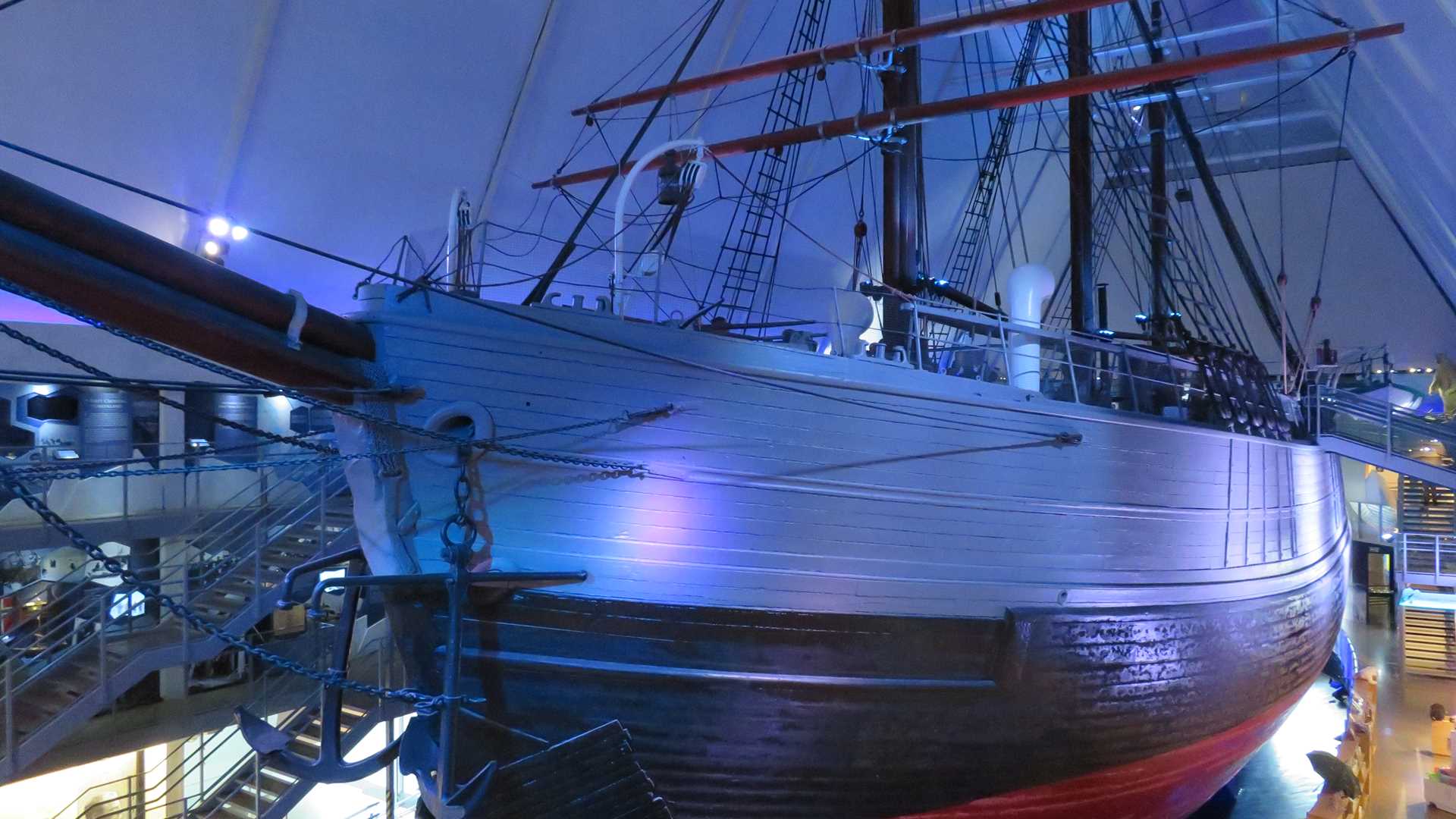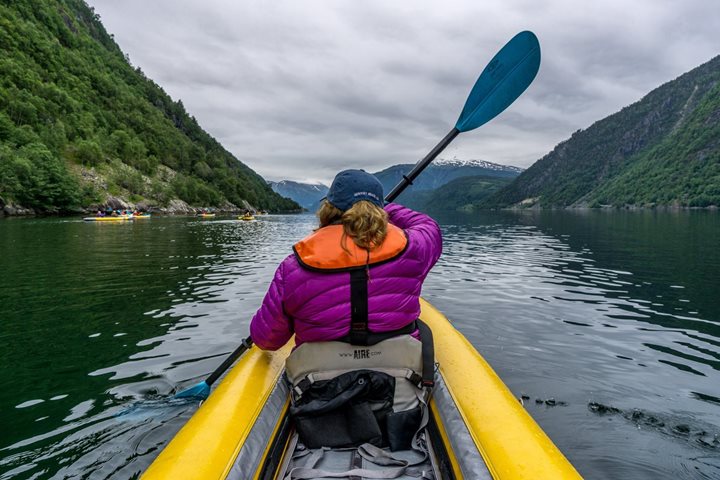After raising anchor in the Weather Islands, we sailed north and picked up a new pilot just south of Norway. Steadily he guided us into Norwegian territorial waters and Oslofjord, the first of those famous Norwegian inlets on our trip. As early fingers of sunlight stretched across the decks of National Geographic Orion, we passed the historic Oscarsborg Fortress and made our way into Oslo, capital of Norway and the base for our day’s activities.
After an early breakfast, our guests disembarked to begin their morning ventures. A large group had opted to visit the Frammuseet (Fram Museum), which is centered on the historic polar exploration vessel Fram. Built in 1891, Fram was perhaps the strongest wooden ship ever built and holds the international record for travelling to the furthest extremes of both Polar Regions. It was Fram that Norwegian Roald Amundsen sailed to Antarctica in 1911, when he beat Captain Robert Scott to the South Pole. Following this, the group explored the Oslo Folk Museum, home to numerous historic buildings that have been relocated here from all over Norway ever since the late 19th century. Beautiful weather and an excellent commentary from our local guides only served to heighten the enjoyment of these beautiful timber buildings.
Meanwhile, other guests visited Mathallen Oslo food market, where they enjoyed the opportunity to cook some local recipes, including gnocchi and poached chicken. Others took the chance to branch out and experience Oslo for themselves. Norway’s capital is a friendly city with many major activities quite close to Orion’s berth at Vippetangen Quay. Some guests visited the Viking Ship Museum, home to the historic Gokstad and Oseberg Viking ships, excavated from burial sites not far away.
After lunch, we set out on the afternoon activities. Many guests had opted to visit Frogner Park, home to the Vigeland sculptures installed there by Gustav Vigeland in the early 20th century. Afterwards we went to the Norwegian Resistance Museum, which told the story of Norway’s Milorg resistance fighters and Free Norwegian Forces fighting overseas during the dark days of the Second World War. Separately, another group of guests visited the Oslo Opera House, Built in 2007, the opera house is made of white granite that appears to rise from the harbour, giving it the local name of the great iceberg. The building contains no less than 1,100 individual rooms and although our guests did not have time to explore each one, they benefitted from a special access, behind the scenes tour.
Before dinner, we were joined on Orion by Thor Heyerdahl Junior, son of the great Kon Tiki explorer who proved through his various sailings around the world that the maritime prowess of prehistoric peoples may have been far more than previously believed.
As we were not due to depart Oslo until late, many guests took the opportunity to spend a few hours ashore and see this vibrant city at dusk. Finally, at 11.30pm, we departed our berth and sailed back down the Oslofjord in the half-light that characterises this beautiful country in the summer nights.






